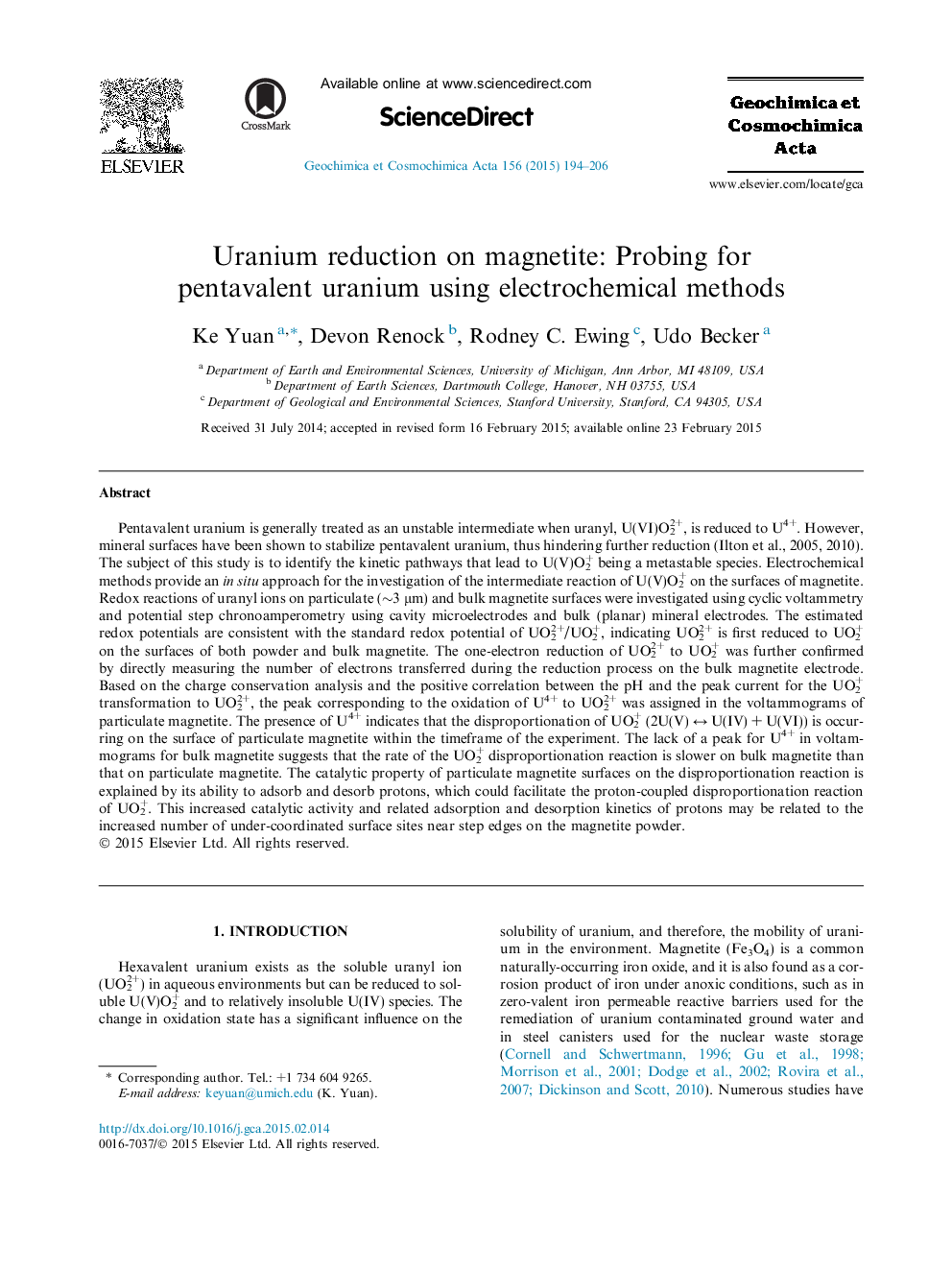| Article ID | Journal | Published Year | Pages | File Type |
|---|---|---|---|---|
| 4701948 | Geochimica et Cosmochimica Acta | 2015 | 13 Pages |
Pentavalent uranium is generally treated as an unstable intermediate when uranyl, U(VI)O22+, is reduced to U4+. However, mineral surfaces have been shown to stabilize pentavalent uranium, thus hindering further reduction (Ilton et al., 2005, 2010). The subject of this study is to identify the kinetic pathways that lead to U(V)O2+ being a metastable species. Electrochemical methods provide an in situ approach for the investigation of the intermediate reaction of U(V)O2+ on the surfaces of magnetite. Redox reactions of uranyl ions on particulate (∼3 μm) and bulk magnetite surfaces were investigated using cyclic voltammetry and potential step chronoamperometry using cavity microelectrodes and bulk (planar) mineral electrodes. The estimated redox potentials are consistent with the standard redox potential of UO22+/UO2+, indicating UO22+ is first reduced to UO2+ on the surfaces of both powder and bulk magnetite. The one-electron reduction of UO22+ to UO2+ was further confirmed by directly measuring the number of electrons transferred during the reduction process on the bulk magnetite electrode. Based on the charge conservation analysis and the positive correlation between the pH and the peak current for the UO2+ transformation to UO22+, the peak corresponding to the oxidation of U4+ to UO22+ was assigned in the voltammograms of particulate magnetite. The presence of U4+ indicates that the disproportionation of UO2+ (2U(V) ↔ U(IV) + U(VI)) is occurring on the surface of particulate magnetite within the timeframe of the experiment. The lack of a peak for U4+ in voltammograms for bulk magnetite suggests that the rate of the UO2+ disproportionation reaction is slower on bulk magnetite than that on particulate magnetite. The catalytic property of particulate magnetite surfaces on the disproportionation reaction is explained by its ability to adsorb and desorb protons, which could facilitate the proton-coupled disproportionation reaction of UO2+. This increased catalytic activity and related adsorption and desorption kinetics of protons may be related to the increased number of under-coordinated surface sites near step edges on the magnetite powder.
